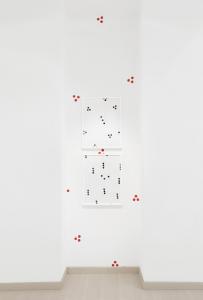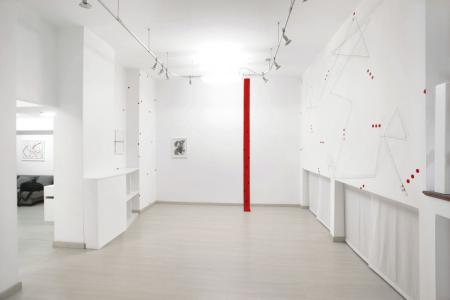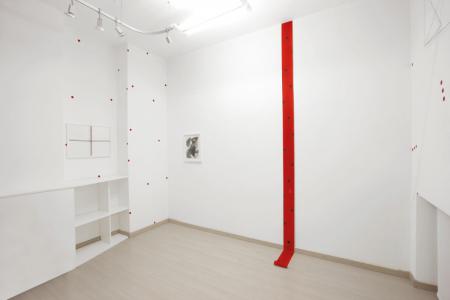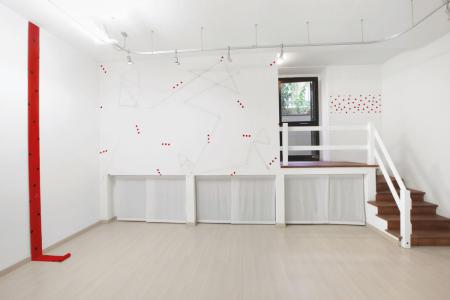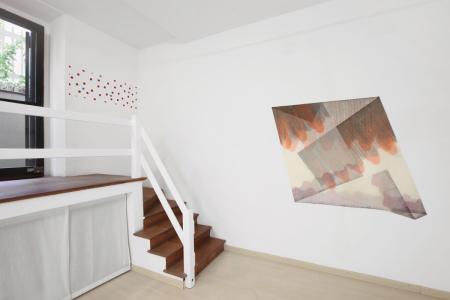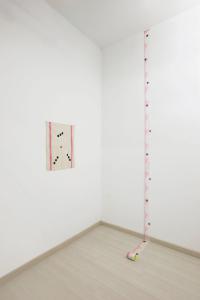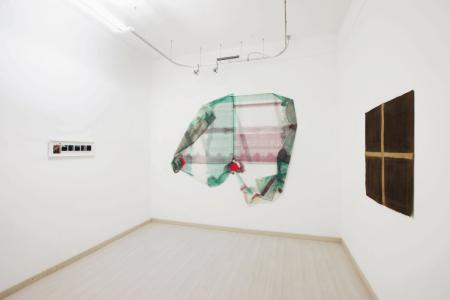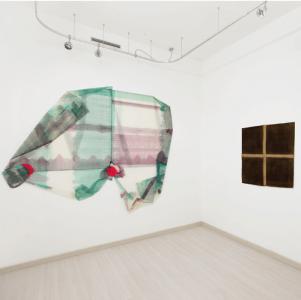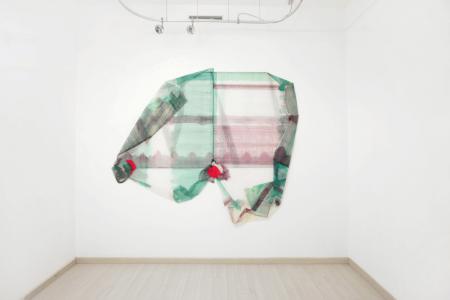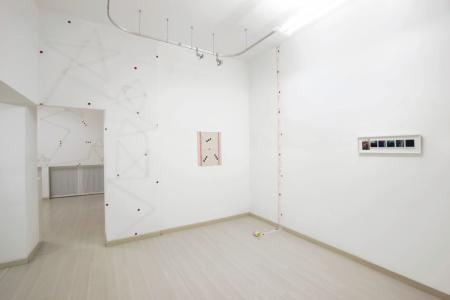Noël Dolla
Degré Zéro
10 November 2016
- 14 January 2017
Via Mario Giuriati, 9
In questa mostra alla Menhir Gallery, l'operazione linguistica è evidente nelle due serie Dolla che sono le più note e apprezzate in Italia: la Croix e le Tarlatane.
La Croix è una serie che nasce nel 1973 come moltiplicazione infinita dei Punti. La superficie è una tela grezza che viene tagliata in quattro parti. Le quattro parti sono dipinte e poi ricucite insieme in modo che i punti evidenzino i confini (o meglio, i limiti) precedenti e i limiti dello spazio, mentre lo spazio stesso viene così ricostruito. La sostanza colorante non è il semplice colore tradizionale del tubo di vernice. Invece, la serie Croix è colorata da diverse sostanze e il risultato non è verificato sulla tavolozza, ma direttamente sulla tela. Le sostanze più corrosive agiscono per sottrazione, colorando la superficie ma anche scrostandola. La serie Tarlatane confina con il grado zero previsto da Barthes. Il gesto doloroso è quasi nulla; la vera sostanza è il tessuto tarlatano arrotolato che viene immerso nel colore o nei colori. La dimensione dell'opera è meno significativa. Nella mostra, un rotolo di garza viene srotolato senza un'indicazione precisa (anche se tipicamente dipendente dall'altezza della parete). Si trovano echi di Piero Manzoni e dei suoi Achromes, opere immerse meccanicamente nel caolino.
Per Noël Dolla, tuttavia, il gesto è un punto di partenza piuttosto che un punto di arrivo; è quasi un "un grado" che mantiene un tocco di colorazione tipico di Supports/Surfaces. Dolla non asseconda l'osservatore - questo è evidente in tutto il suo corpo di lavoro - e così il suo lavoro rimane un'esemplificazione della verità artistica.
-
In this exhibition at the Menhir Gallery, the linguistic operation is evident in the two Dolla series which are the most well-known and appre- ciated in Italy: the Croix and the Tarlatane.
The Croix is a series that began in 1973 as an infinite multiplication of the Points. The surface is a rough canvas that is cut into four parts. The four parts are painted and then restitched together in a way that the stitches highlight the pre- vious borders (or rather, limits) and the limits of space, as the space itself is thus rebuilt. The coloring substance is not the mere tra- ditional paint tube color. Instead, the series Croix is colored by several substances and the result is not veri- fied on the palette, but directly on the canvas. More corrosive substances act by subtraction, coloring the surface while also peeling it away. The Tarlatane series borders on the Zero Degree predicted by Barthes. The pain- ting gesture is almost nothing; the real substance is the rolled tarlatan fabric which is immersed in color or colors. The dimension of the work is less significant. In the exhibition, a roll of gauze is unrolled without a precise indication (though typically dependent on the wall height). One finds of echoes of Piero Manzoni and his Achromes works which are mechani- cally immersed in kaolin.
For Noël Dolla, however, the gesture is a point of departure rather than a point of arrival; it is almost a “one degree” that maintains a touch of coloring typical of Supports/Surfaces. Dolla does not pander to the observer — this is apparent throughout his entire body of work — and thus his work remains an exemplification of artistic truth.
